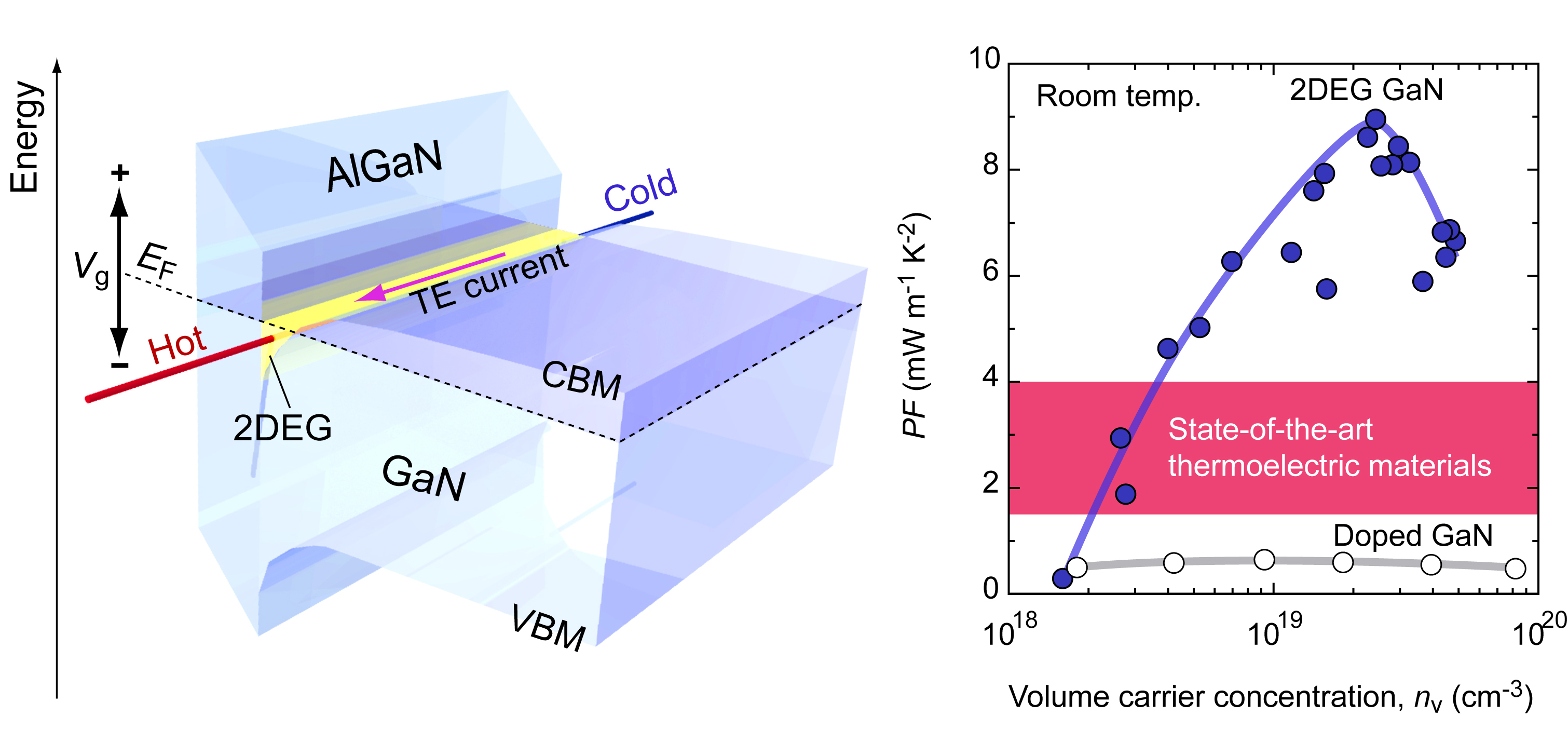Thermoelectric energy conversion using blue LED material
High thermoelectric power factor of high-mobility two-dimensional electron gas [Advanced Science (2017) DOI: 10.1002/advs.201700696]

Thermoelectric conversion is an energy harvesting technology that directly converts waste heat from various sources into electricity by the Seebeck effect of thermoelectric materials with a large thermopower (S), high electrical conductivity (σ), and low thermal conductivity (κ). State-of-the-art nanostructuring techniques that significantly reduce κ have realized high performance thermoelectric materials with a figure of merit (ZT= S2∙σ∙T∙κ−1) between 1.5−2. Although the power factor (PF=S2∙σ) must also be enhanced to further improve ZT, the maximum PF remains near 1.5−4 mW m−1 K−2 due to the well-known trade-off relationship between S and σ. At a maximized PF, σ is much lower than the ideal value since impurity doping suppresses the carrier mobility. We prepared a metal-oxide-semiconductor high electron mobility transistor (MOS-HEMT) structure on an AlGaN/GaN heterostructure. Applying a gate electric field to the MOS-HEMT simultaneously modulates S and σ of the high-mobility electron gas from −490 μV K−1 and ~10−1 S cm−1 to −90 μV K−1 and ~104 S cm−1, while maintaining a high carrier mobility (~1500 cm2 V−1 s−1). The maximized PF of the high-mobility electron gas is ~9 mW m−1 K−2, which is a two- to six-fold increase compared to state-of-the-art practical thermoelectric materials.

